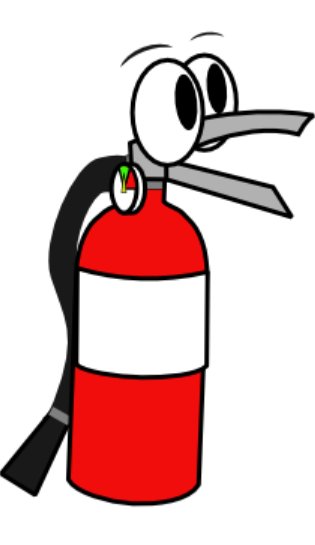Fire extinguishers are crucial tools for tackling small fires and ensuring the safety of your surroundings. Regular inspections are key to making sure these life-saving devices are ready when you need them. In this blog post, we’ll break down the steps of how to inspect a fire extinguisher in straightforward, layman’s terms.

Visual Check-Up:
Begin with a visual inspection. Look for any obvious signs of wear and tear. Check if the extinguisher is in its designated place and easily accessible. Ensure that the operating instructions and safety information are visible and easy to read.
Seal and Tamper Check:
If your fire extinguisher is rechargeable, look for a seal or tamper indicator. This is usually a plastic tag or seal that needs to be intact. During the inspection, break the seal (if present) and make sure to replace it with a new one after the check.
Examine for Physical Damage:
Carefully inspect the entire extinguisher for any physical damage, such as dents, cracks, or corrosion. If you notice any issues, it’s crucial to address them immediately. Physical damage can affect the performance of the extinguisher.
Boots, Rings, and Attachments:
Some fire extinguishers have removable parts like boots, foot rings, or attachments. Remove these to allow for a thorough examination of the cylinder. This step ensures that every part is in good condition.
Check the Pressure Gauge:
Most fire extinguishers come with a pressure gauge. Ensure the needle is in the green zone. If it’s in the red, it might be a sign that the extinguisher needs to be replaced or recharged. Proper pressure is essential for effective firefighting.
Internal Examination (if applicable):
Depending on the type of extinguisher, there might be a need for internal examination. Refer to the manufacturer’s guidelines or the inspection tag for specific instructions on how often this should be done.
Maintenance Record Keeping:
Each fire extinguisher should have a tag or label attached. This tag should indicate the month and year of the last maintenance, the person who performed the inspection, and the agency’s name. This record-keeping is essential for tracking the extinguisher’s history.
By following these simple steps, you can conduct a basic inspection of your fire extinguisher. Remember, regular checks are essential to ensure your extinguisher is always ready to protect you and your property in case of a fire emergency. If you find any issues during the inspection, don’t hesitate to take immediate corrective action or seek professional assistance. Your safety is worth the effort!
